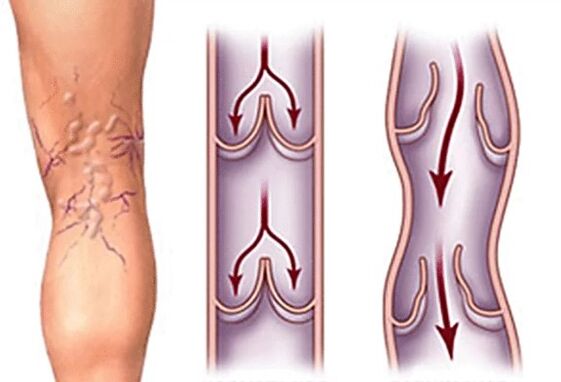
The concept of varicose veinsVaricose is a disease that affects the muscular layer and connective tissue of the vascular wall, as well as their valve device. Consequently, the veins are extended, the blood circulation in this place, the reversed blood of the blood through the vessels.Most people know the varicose veins on their feet. But there are other locations of the disease because the vessels can be affected in any part of the body.Most often, in medical practice, the varicose veins of pelvic organs (bladder, uterus), perineum (scrotum, rectum, vagina) are diagnosed. However, in all cases, the clinical picture of the disease depends on the place of damage and the stage of pathology.Varicose veins in men and its characteristicsAt a young age (on average, at 10-12 years old), a young man can meet a disease such as the varicose veins of the veins of the scrotum.In the scientist, this state is called "varicococele". It can be found during a simple examination and palpation of the scrotum. Clinically varicocele manifests itself by a number of symptoms, in particular:pain in the side or half of the affected scrotum, intensifying after physical activity;severity in the testicle;infertility.However, often the Varicocele may not show itself at all and be identified by accident during a planned exam.This disease distinguishes three stages:A slight expansion of the veins, which can be observed when the patient performs the Valsalva sample (constraint);The veins are visible and palpated in a calm state of the patient;The ships are strongly changed, convincing, filled with blood. The testicle in the area affected by the disease is reduced in size, has a test consistency.In adult patients, varicose veins of a scrotum are often diagnosed when treating a doctor with complaints from the inability to have a child. There is a theory that varicocele affects fertility (the ability to reproduce offspring) by increasing the temperature inside the scrotum, which negatively affects the testicle and spermatogenesis. In addition, this type of varicose veins in men is often combined with damage to the vessels on the legs.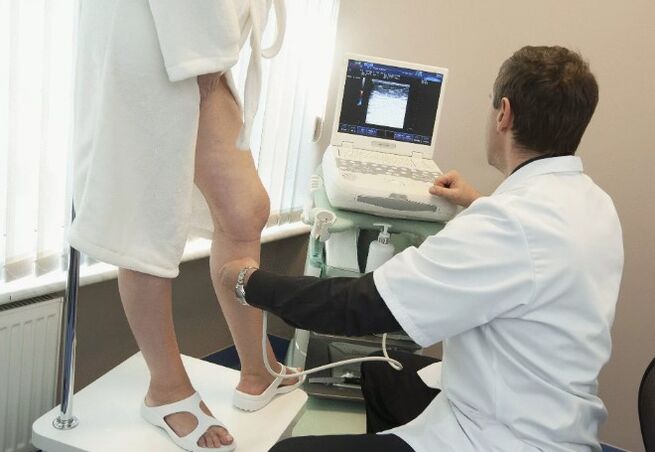
The diagnosis of the disease is simple.As mentioned above, you can suspect varicose veins of scrotum during a normal examination, then an ultrasound study of the vascular beam must be carried out to confirm. As a treatment method, only surgery is used: the doctor simply ligates varicose veins, blood circulation is carried out according to anastomoses. However, it should be kept in mind that, as for varicose veins, the operation does not guarantee complete healing. In addition, the disease in many cases is recurrent.Characteristics of varicose veins in womenPelvic varics.For women, this disease is a risk of drawback of the fetus. As mentioned above, varicose veins can occur on any part of the body, including in the pelvic area. During pregnancy, the situation is aggravated because, first, the vessels of the abdominal cavity are stretched as the fetus develops, and secondly, the uterus increasing in size exerts pressure on them. Due to these processes, the blood circulation of the placenta is disrupted, which can lead to its rejection. In this case, of course, the probability of losing a child increases considerably.Sometimes the varicose veins start during pregnancy.Before conception, a woman could not suspect at all that she tended to illness. However, during the fetus carrying period, the female body is subject to certain changes in the body which can cause certain diseases, including varicose veins. Such changes include: Change the hormonal background;increase in body weight;Anatomical changes.In addition, the number of births is directly proportional to the risk of gaining a subsequent pathology. In addition to pelvic varicose veins, during pregnancy, other complications can occur:rupture of the uterine veins during childbirth;thrombophlebititis;dermatitis, trophic ulcers;venous deficiency.Thus, pregnancy is a factor which, unfortunately, can cause varicose veins, because it contributes to a faster development of pathology and requires preventive measures with a certain diagnosis.Other consequences of varicose veinsThrombophlebititis.Often, varicose vein and venous deficiency lead to inflammation of the walls of blood vessels - phebitous, which can be combined with the formation of blood clots - thrombophlebititis. Basically, this disease affects the vessels of the lower limbs, following which patients complain of serious pain in the affected areas of the legs. Symptoms of a general inflammatory reaction are noted: high temperature, weakness. If the processing is not started in time, the process applies to other veins, the patient's condition worsens. 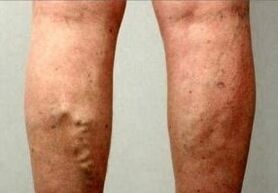
Thromboembolie.In the presence of thrombophlebitis and varicose veins, there is a risk of serious complication - thromboembolia. It occurs due to the separation of the blood clot from the wall of the vessel, followed by the blockage of the most important trunks which nourish the heart, the light and the brain.Initially, a blood clot can be, for example, in the leg (it's the most common). However, from the lower limb, it is forced to move through the blood flow towards various parts of the body. Consequently, falling into smaller branches of the vascular system, the blood clot causes collapse, following which the blood circulation of the site is disturbed from the appearance of ischemia, then necrosis. Clinically, this manifests itself by a heart attack, a stroke or a pulmonary and fats (pulmonary arterial thromboembolia), which often ends death.Treatment of patients who are made of such a diagnosis should only be carried out in intensive care and intensive care units. Measures to provide patient assistance in this case must be taken immediately - only in this case, the patient has a chance of salvation.Dermatitis.Most often, this unpleasant complication occurs on the inner surface of the lower leg, manifests itself as a certain number of symptoms, in particular:skin thinning;epidermal pigmentation;itching of the affected area; the appearance of bubbles that tend to "open up", which leads to skin stratification;Violation of the sensitivity of the affected area.Dermatitis does not heal well, can hardly be treated. The presence of a thrombus implies the occurrence of trophic ulcers - skin death sections. In the future, an infection can join ulcers from which purulent injuries may appear.Telegioectasia.This cosmetic defect, which resembles vascular "stars", is a consequence of ruptures of small surface capillaries and a sign of the initial stage of varicose veins.Hemorrhoids.It is a very common disease - nothing more than varicose veins of the rectum. It manifests itself by the emergence of hemorrhoidal nodes so called, which are often able to go out, break and become inflamed. This causes an important concern for patients.Diagnostic methods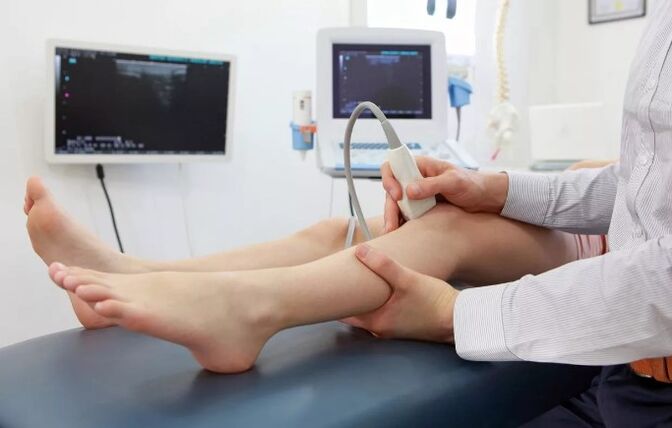
The simplest and most affordable way to detect varicose veins and its complications is the ultrasonic doppler veins of the lower limbs. In the process of this study, blood circulation, blood vessels and the state of their walls as a whole are assessed. Thus, the diagnosis above helps to detect blood clots. In addition, all patients with varicose veins are required to pass doppler before any surgical intervention in order to exclude the presence of blood clots in order to avoid complications. In cases where the patient is suspected of a venous deficiency or a thrombosis, doctors recommend that the contrast phlebography of X -rays (the method of evaluating the work of the veins).To do this, a special serum - albumin is introduced into the ship, after which X radiation is taken, on which the impulses from the veins will be recorded. Ensuite, le résultat est évalué.Vous pouvez terminer l'examen avec une tomodensitométrie avec le contraste des troncs militaires. Cette méthode est la plus précise, mais plus chère. However, this diagnostic method not only identifies vascular diseases, but also to assess the state of other systems and body tissues.Traitement des complicationsLa thérapie pour les conséquences des varices dépend de l'état actuel du patient et, directement, du type de complication. Ainsi, la thrombophlébittis nécessite la prescription de médicaments anti-inflammatoires, d'antibiotiques, d'analgésiques. À mesure que le processus inflammatoire se diminue, la physiothérapie, l'hiudothérapie (traitement par sangsue) sont recommandées. Une opération peut être proposée comme traitement étiotrope - ligature et élimination de la veine.Les ulcères trophiques sont mal traités.Le chirurgien élimine les zones de nécrose, prescrit des pansements avec un antiseptique et des onguents. Avec ces manipulations, la thérapie antibactérienne et la circulation sanguine à Vienne sont effectuées. The vascular stars are eliminated by sclerotherapy, that is to say the "collage" if called the light of the veins. After the procedure, the wearing of compression linen for the prevention of relapses is prescribed.Other complications, such as hemorrhoids, varicocele and varicose veins of the basin, cannot be cured surgically after an in -depth examination and identify the affected vein.Forecast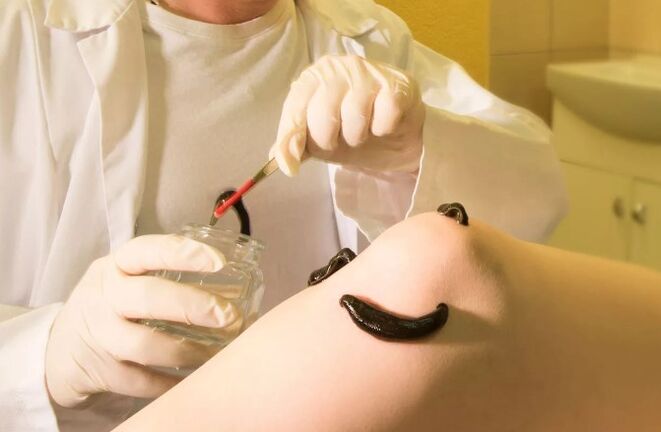
An unfavorable prognosis is observed in the case of thromboembolism of the pulmonary artery, the number of deaths in which 75%reaches. In addition, thrombophlebitis with trophic lesions of the skin has a characteristic not surrounded, because with such disease, persistent changes in blood vessels occur, and the risk of infection is also increased, which leads to a certain number of complications. The consequences of the disease can often lead the patient to disability.The indications for the supply of a patient for handicap are:the presence of thrombosis and transferred thromboembolia;Recurring erysipelas;post-trombophlebitic syndrome;Ineffective surgical treatment.Most often, invalidity is given to patients with the last stage of varicose veins with persistent disabled performance.
Varicose veins in men and its characteristicsAt a young age (on average, at 10-12 years old), a young man can meet a disease such as the varicose veins of the veins of the scrotum.In the scientist, this state is called "varicococele". It can be found during a simple examination and palpation of the scrotum. Clinically varicocele manifests itself by a number of symptoms, in particular:pain in the side or half of the affected scrotum, intensifying after physical activity;severity in the testicle;infertility.However, often the Varicocele may not show itself at all and be identified by accident during a planned exam.This disease distinguishes three stages:A slight expansion of the veins, which can be observed when the patient performs the Valsalva sample (constraint);The veins are visible and palpated in a calm state of the patient;The ships are strongly changed, convincing, filled with blood. The testicle in the area affected by the disease is reduced in size, has a test consistency.In adult patients, varicose veins of a scrotum are often diagnosed when treating a doctor with complaints from the inability to have a child. There is a theory that varicocele affects fertility (the ability to reproduce offspring) by increasing the temperature inside the scrotum, which negatively affects the testicle and spermatogenesis. In addition, this type of varicose veins in men is often combined with damage to the vessels on the legs.
The diagnosis of the disease is simple.As mentioned above, you can suspect varicose veins of scrotum during a normal examination, then an ultrasound study of the vascular beam must be carried out to confirm. As a treatment method, only surgery is used: the doctor simply ligates varicose veins, blood circulation is carried out according to anastomoses. However, it should be kept in mind that, as for varicose veins, the operation does not guarantee complete healing. In addition, the disease in many cases is recurrent.Characteristics of varicose veins in womenPelvic varics.For women, this disease is a risk of drawback of the fetus. As mentioned above, varicose veins can occur on any part of the body, including in the pelvic area. During pregnancy, the situation is aggravated because, first, the vessels of the abdominal cavity are stretched as the fetus develops, and secondly, the uterus increasing in size exerts pressure on them. Due to these processes, the blood circulation of the placenta is disrupted, which can lead to its rejection. In this case, of course, the probability of losing a child increases considerably.Sometimes the varicose veins start during pregnancy.Before conception, a woman could not suspect at all that she tended to illness. However, during the fetus carrying period, the female body is subject to certain changes in the body which can cause certain diseases, including varicose veins. Such changes include: Change the hormonal background;increase in body weight;Anatomical changes.In addition, the number of births is directly proportional to the risk of gaining a subsequent pathology. In addition to pelvic varicose veins, during pregnancy, other complications can occur:rupture of the uterine veins during childbirth;thrombophlebititis;dermatitis, trophic ulcers;venous deficiency.Thus, pregnancy is a factor which, unfortunately, can cause varicose veins, because it contributes to a faster development of pathology and requires preventive measures with a certain diagnosis.Other consequences of varicose veinsThrombophlebititis.Often, varicose vein and venous deficiency lead to inflammation of the walls of blood vessels - phebitous, which can be combined with the formation of blood clots - thrombophlebititis. Basically, this disease affects the vessels of the lower limbs, following which patients complain of serious pain in the affected areas of the legs. Symptoms of a general inflammatory reaction are noted: high temperature, weakness. If the processing is not started in time, the process applies to other veins, the patient's condition worsens. 
Thromboembolie.In the presence of thrombophlebitis and varicose veins, there is a risk of serious complication - thromboembolia. It occurs due to the separation of the blood clot from the wall of the vessel, followed by the blockage of the most important trunks which nourish the heart, the light and the brain.Initially, a blood clot can be, for example, in the leg (it's the most common). However, from the lower limb, it is forced to move through the blood flow towards various parts of the body. Consequently, falling into smaller branches of the vascular system, the blood clot causes collapse, following which the blood circulation of the site is disturbed from the appearance of ischemia, then necrosis. Clinically, this manifests itself by a heart attack, a stroke or a pulmonary and fats (pulmonary arterial thromboembolia), which often ends death.Treatment of patients who are made of such a diagnosis should only be carried out in intensive care and intensive care units. Measures to provide patient assistance in this case must be taken immediately - only in this case, the patient has a chance of salvation.Dermatitis.Most often, this unpleasant complication occurs on the inner surface of the lower leg, manifests itself as a certain number of symptoms, in particular:skin thinning;epidermal pigmentation;itching of the affected area; the appearance of bubbles that tend to "open up", which leads to skin stratification;Violation of the sensitivity of the affected area.Dermatitis does not heal well, can hardly be treated. The presence of a thrombus implies the occurrence of trophic ulcers - skin death sections. In the future, an infection can join ulcers from which purulent injuries may appear.Telegioectasia.This cosmetic defect, which resembles vascular "stars", is a consequence of ruptures of small surface capillaries and a sign of the initial stage of varicose veins.Hemorrhoids.It is a very common disease - nothing more than varicose veins of the rectum. It manifests itself by the emergence of hemorrhoidal nodes so called, which are often able to go out, break and become inflamed. This causes an important concern for patients.Diagnostic methods
The simplest and most affordable way to detect varicose veins and its complications is the ultrasonic doppler veins of the lower limbs. In the process of this study, blood circulation, blood vessels and the state of their walls as a whole are assessed. Thus, the diagnosis above helps to detect blood clots. In addition, all patients with varicose veins are required to pass doppler before any surgical intervention in order to exclude the presence of blood clots in order to avoid complications. In cases where the patient is suspected of a venous deficiency or a thrombosis, doctors recommend that the contrast phlebography of X -rays (the method of evaluating the work of the veins).To do this, a special serum - albumin is introduced into the ship, after which X radiation is taken, on which the impulses from the veins will be recorded. Ensuite, le résultat est évalué.Vous pouvez terminer l'examen avec une tomodensitométrie avec le contraste des troncs militaires. Cette méthode est la plus précise, mais plus chère. However, this diagnostic method not only identifies vascular diseases, but also to assess the state of other systems and body tissues.Traitement des complicationsLa thérapie pour les conséquences des varices dépend de l'état actuel du patient et, directement, du type de complication. Ainsi, la thrombophlébittis nécessite la prescription de médicaments anti-inflammatoires, d'antibiotiques, d'analgésiques. À mesure que le processus inflammatoire se diminue, la physiothérapie, l'hiudothérapie (traitement par sangsue) sont recommandées. Une opération peut être proposée comme traitement étiotrope - ligature et élimination de la veine.Les ulcères trophiques sont mal traités.Le chirurgien élimine les zones de nécrose, prescrit des pansements avec un antiseptique et des onguents. Avec ces manipulations, la thérapie antibactérienne et la circulation sanguine à Vienne sont effectuées. The vascular stars are eliminated by sclerotherapy, that is to say the "collage" if called the light of the veins. After the procedure, the wearing of compression linen for the prevention of relapses is prescribed.Other complications, such as hemorrhoids, varicocele and varicose veins of the basin, cannot be cured surgically after an in -depth examination and identify the affected vein.Forecast
An unfavorable prognosis is observed in the case of thromboembolism of the pulmonary artery, the number of deaths in which 75%reaches. In addition, thrombophlebitis with trophic lesions of the skin has a characteristic not surrounded, because with such disease, persistent changes in blood vessels occur, and the risk of infection is also increased, which leads to a certain number of complications. The consequences of the disease can often lead the patient to disability.The indications for the supply of a patient for handicap are:the presence of thrombosis and transferred thromboembolia;Recurring erysipelas;post-trombophlebitic syndrome;Ineffective surgical treatment.Most often, invalidity is given to patients with the last stage of varicose veins with persistent disabled performance.

Characteristics of varicose veins in womenPelvic varics.For women, this disease is a risk of drawback of the fetus. As mentioned above, varicose veins can occur on any part of the body, including in the pelvic area. During pregnancy, the situation is aggravated because, first, the vessels of the abdominal cavity are stretched as the fetus develops, and secondly, the uterus increasing in size exerts pressure on them. Due to these processes, the blood circulation of the placenta is disrupted, which can lead to its rejection. In this case, of course, the probability of losing a child increases considerably.Sometimes the varicose veins start during pregnancy.Before conception, a woman could not suspect at all that she tended to illness. However, during the fetus carrying period, the female body is subject to certain changes in the body which can cause certain diseases, including varicose veins. Such changes include: Change the hormonal background;increase in body weight;Anatomical changes.In addition, the number of births is directly proportional to the risk of gaining a subsequent pathology. In addition to pelvic varicose veins, during pregnancy, other complications can occur:rupture of the uterine veins during childbirth;thrombophlebititis;dermatitis, trophic ulcers;venous deficiency.Thus, pregnancy is a factor which, unfortunately, can cause varicose veins, because it contributes to a faster development of pathology and requires preventive measures with a certain diagnosis.Other consequences of varicose veinsThrombophlebititis.Often, varicose vein and venous deficiency lead to inflammation of the walls of blood vessels - phebitous, which can be combined with the formation of blood clots - thrombophlebititis. Basically, this disease affects the vessels of the lower limbs, following which patients complain of serious pain in the affected areas of the legs. Symptoms of a general inflammatory reaction are noted: high temperature, weakness. If the processing is not started in time, the process applies to other veins, the patient's condition worsens. 
Thromboembolie.In the presence of thrombophlebitis and varicose veins, there is a risk of serious complication - thromboembolia. It occurs due to the separation of the blood clot from the wall of the vessel, followed by the blockage of the most important trunks which nourish the heart, the light and the brain.Initially, a blood clot can be, for example, in the leg (it's the most common). However, from the lower limb, it is forced to move through the blood flow towards various parts of the body. Consequently, falling into smaller branches of the vascular system, the blood clot causes collapse, following which the blood circulation of the site is disturbed from the appearance of ischemia, then necrosis. Clinically, this manifests itself by a heart attack, a stroke or a pulmonary and fats (pulmonary arterial thromboembolia), which often ends death.Treatment of patients who are made of such a diagnosis should only be carried out in intensive care and intensive care units. Measures to provide patient assistance in this case must be taken immediately - only in this case, the patient has a chance of salvation.Dermatitis.Most often, this unpleasant complication occurs on the inner surface of the lower leg, manifests itself as a certain number of symptoms, in particular:skin thinning;epidermal pigmentation;itching of the affected area; the appearance of bubbles that tend to "open up", which leads to skin stratification;Violation of the sensitivity of the affected area.Dermatitis does not heal well, can hardly be treated. The presence of a thrombus implies the occurrence of trophic ulcers - skin death sections. In the future, an infection can join ulcers from which purulent injuries may appear.Telegioectasia.This cosmetic defect, which resembles vascular "stars", is a consequence of ruptures of small surface capillaries and a sign of the initial stage of varicose veins.Hemorrhoids.It is a very common disease - nothing more than varicose veins of the rectum. It manifests itself by the emergence of hemorrhoidal nodes so called, which are often able to go out, break and become inflamed. This causes an important concern for patients.Diagnostic methods
The simplest and most affordable way to detect varicose veins and its complications is the ultrasonic doppler veins of the lower limbs. In the process of this study, blood circulation, blood vessels and the state of their walls as a whole are assessed. Thus, the diagnosis above helps to detect blood clots. In addition, all patients with varicose veins are required to pass doppler before any surgical intervention in order to exclude the presence of blood clots in order to avoid complications. In cases where the patient is suspected of a venous deficiency or a thrombosis, doctors recommend that the contrast phlebography of X -rays (the method of evaluating the work of the veins).To do this, a special serum - albumin is introduced into the ship, after which X radiation is taken, on which the impulses from the veins will be recorded. Ensuite, le résultat est évalué.Vous pouvez terminer l'examen avec une tomodensitométrie avec le contraste des troncs militaires. Cette méthode est la plus précise, mais plus chère. However, this diagnostic method not only identifies vascular diseases, but also to assess the state of other systems and body tissues.Traitement des complicationsLa thérapie pour les conséquences des varices dépend de l'état actuel du patient et, directement, du type de complication. Ainsi, la thrombophlébittis nécessite la prescription de médicaments anti-inflammatoires, d'antibiotiques, d'analgésiques. À mesure que le processus inflammatoire se diminue, la physiothérapie, l'hiudothérapie (traitement par sangsue) sont recommandées. Une opération peut être proposée comme traitement étiotrope - ligature et élimination de la veine.Les ulcères trophiques sont mal traités.Le chirurgien élimine les zones de nécrose, prescrit des pansements avec un antiseptique et des onguents. Avec ces manipulations, la thérapie antibactérienne et la circulation sanguine à Vienne sont effectuées. The vascular stars are eliminated by sclerotherapy, that is to say the "collage" if called the light of the veins. After the procedure, the wearing of compression linen for the prevention of relapses is prescribed.Other complications, such as hemorrhoids, varicocele and varicose veins of the basin, cannot be cured surgically after an in -depth examination and identify the affected vein.Forecast
An unfavorable prognosis is observed in the case of thromboembolism of the pulmonary artery, the number of deaths in which 75%reaches. In addition, thrombophlebitis with trophic lesions of the skin has a characteristic not surrounded, because with such disease, persistent changes in blood vessels occur, and the risk of infection is also increased, which leads to a certain number of complications. The consequences of the disease can often lead the patient to disability.The indications for the supply of a patient for handicap are:the presence of thrombosis and transferred thromboembolia;Recurring erysipelas;post-trombophlebitic syndrome;Ineffective surgical treatment.Most often, invalidity is given to patients with the last stage of varicose veins with persistent disabled performance.
Other consequences of varicose veinsThrombophlebititis.Often, varicose vein and venous deficiency lead to inflammation of the walls of blood vessels - phebitous, which can be combined with the formation of blood clots - thrombophlebititis. Basically, this disease affects the vessels of the lower limbs, following which patients complain of serious pain in the affected areas of the legs. Symptoms of a general inflammatory reaction are noted: high temperature, weakness. If the processing is not started in time, the process applies to other veins, the patient's condition worsens. 
Thromboembolie.In the presence of thrombophlebitis and varicose veins, there is a risk of serious complication - thromboembolia. It occurs due to the separation of the blood clot from the wall of the vessel, followed by the blockage of the most important trunks which nourish the heart, the light and the brain.Initially, a blood clot can be, for example, in the leg (it's the most common). However, from the lower limb, it is forced to move through the blood flow towards various parts of the body. Consequently, falling into smaller branches of the vascular system, the blood clot causes collapse, following which the blood circulation of the site is disturbed from the appearance of ischemia, then necrosis. Clinically, this manifests itself by a heart attack, a stroke or a pulmonary and fats (pulmonary arterial thromboembolia), which often ends death.Treatment of patients who are made of such a diagnosis should only be carried out in intensive care and intensive care units. Measures to provide patient assistance in this case must be taken immediately - only in this case, the patient has a chance of salvation.Dermatitis.Most often, this unpleasant complication occurs on the inner surface of the lower leg, manifests itself as a certain number of symptoms, in particular:skin thinning;epidermal pigmentation;itching of the affected area; the appearance of bubbles that tend to "open up", which leads to skin stratification;Violation of the sensitivity of the affected area.Dermatitis does not heal well, can hardly be treated. The presence of a thrombus implies the occurrence of trophic ulcers - skin death sections. In the future, an infection can join ulcers from which purulent injuries may appear.Telegioectasia.This cosmetic defect, which resembles vascular "stars", is a consequence of ruptures of small surface capillaries and a sign of the initial stage of varicose veins.Hemorrhoids.It is a very common disease - nothing more than varicose veins of the rectum. It manifests itself by the emergence of hemorrhoidal nodes so called, which are often able to go out, break and become inflamed. This causes an important concern for patients.Diagnostic methods
The simplest and most affordable way to detect varicose veins and its complications is the ultrasonic doppler veins of the lower limbs. In the process of this study, blood circulation, blood vessels and the state of their walls as a whole are assessed. Thus, the diagnosis above helps to detect blood clots. In addition, all patients with varicose veins are required to pass doppler before any surgical intervention in order to exclude the presence of blood clots in order to avoid complications. In cases where the patient is suspected of a venous deficiency or a thrombosis, doctors recommend that the contrast phlebography of X -rays (the method of evaluating the work of the veins).To do this, a special serum - albumin is introduced into the ship, after which X radiation is taken, on which the impulses from the veins will be recorded. Ensuite, le résultat est évalué.Vous pouvez terminer l'examen avec une tomodensitométrie avec le contraste des troncs militaires. Cette méthode est la plus précise, mais plus chère. However, this diagnostic method not only identifies vascular diseases, but also to assess the state of other systems and body tissues.Traitement des complicationsLa thérapie pour les conséquences des varices dépend de l'état actuel du patient et, directement, du type de complication. Ainsi, la thrombophlébittis nécessite la prescription de médicaments anti-inflammatoires, d'antibiotiques, d'analgésiques. À mesure que le processus inflammatoire se diminue, la physiothérapie, l'hiudothérapie (traitement par sangsue) sont recommandées. Une opération peut être proposée comme traitement étiotrope - ligature et élimination de la veine.Les ulcères trophiques sont mal traités.Le chirurgien élimine les zones de nécrose, prescrit des pansements avec un antiseptique et des onguents. Avec ces manipulations, la thérapie antibactérienne et la circulation sanguine à Vienne sont effectuées. The vascular stars are eliminated by sclerotherapy, that is to say the "collage" if called the light of the veins. After the procedure, the wearing of compression linen for the prevention of relapses is prescribed.Other complications, such as hemorrhoids, varicocele and varicose veins of the basin, cannot be cured surgically after an in -depth examination and identify the affected vein.Forecast
An unfavorable prognosis is observed in the case of thromboembolism of the pulmonary artery, the number of deaths in which 75%reaches. In addition, thrombophlebitis with trophic lesions of the skin has a characteristic not surrounded, because with such disease, persistent changes in blood vessels occur, and the risk of infection is also increased, which leads to a certain number of complications. The consequences of the disease can often lead the patient to disability.The indications for the supply of a patient for handicap are:the presence of thrombosis and transferred thromboembolia;Recurring erysipelas;post-trombophlebitic syndrome;Ineffective surgical treatment.Most often, invalidity is given to patients with the last stage of varicose veins with persistent disabled performance.
























